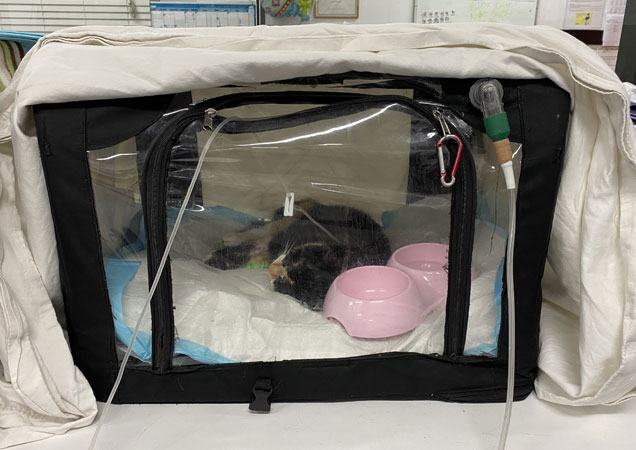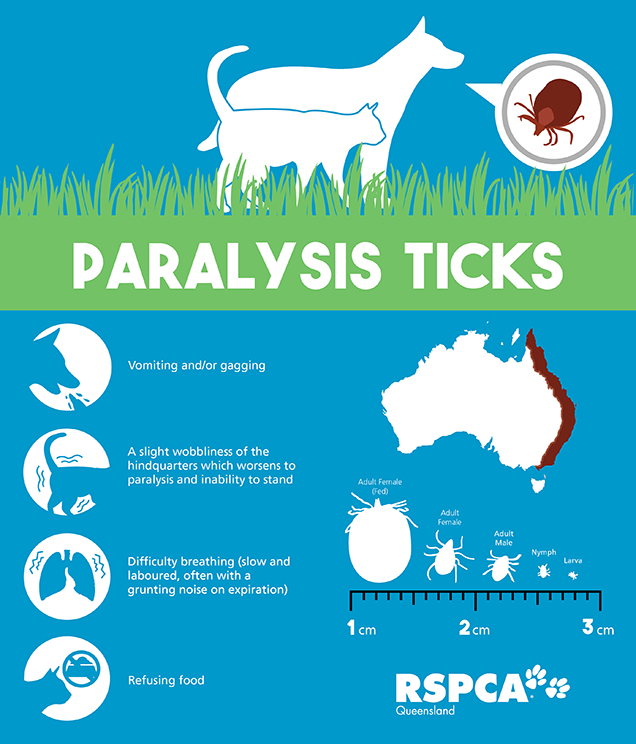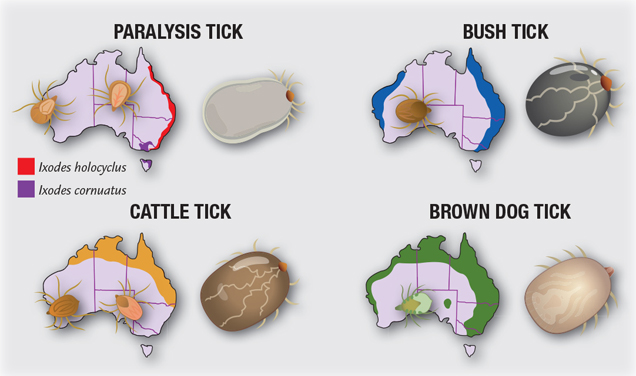Puppies Colby and Conrad were brought into RSPCA care via our Inspectorate. They had a severe tick burden, but luckily have made a full recovery after veterinary care and are now available to adopt.


The prevalence of ticks increases during ‘tick season’ - October to March. Mild winters and lots of rain at the start of spring and summer contribute to the rise in tick cases.
Ticks normally attach themselves to our native animals like possums and bandicoots, so if you live in bushland areas with wildlife, chances are, ticks will be prevalent!

A cat recovering from tick paralysis in an oxygen tent at the RSPCA
Read more here about ehrlichiosis in dogs and why you need to check your pet for ticks!
How can I prevent my pet getting a tick?
Use a tick or flea treatment to protect your pet from the risk of ticks. Your local vet can provide advice on the best tick prevention for your pet. Products are available such as tick collars and shampoos and rinses that prevent ticks. You can view the full range of tick preventatives at RSPCA World for Pets.
You should also check your pet for ticks daily. When checking, feel for small lumps and make sure you look in ‘hidden’ places such as under the collar, between toes, their paws, gumline and inside their ears.
You can also help prevent your feline getting ticks by keeping them indoors.
What are the signs that my pet might have a tick?
The most common symptom is paralysis of hind legs. Other symptoms include an unsteady staggering walk, a dry cough, or even just a change in the animal’s bark or meow. If you see any of these symptoms contact your vet and search your pet for ticks.
Check out the infographic below for a quick guide to recognising symptoms of ticks.
What should I do if my pet has a tick?
Remove it! If you find a tick on your pet, it is best to remove it as quickly as possible. Use tweezers or a tick removal system. Once removed, monitor your pet for symptoms of tick paralysis - take your pet to the vet immediately if they are displaying paralysis symptoms.
Note: Some cats and dogs do not show the typical hind limb paralysis at first. Initially they may only exhibit a gurgling, choking cough, however their condition will quickly deteriorate.

Read more about Ticks from our Summer Tips section.








